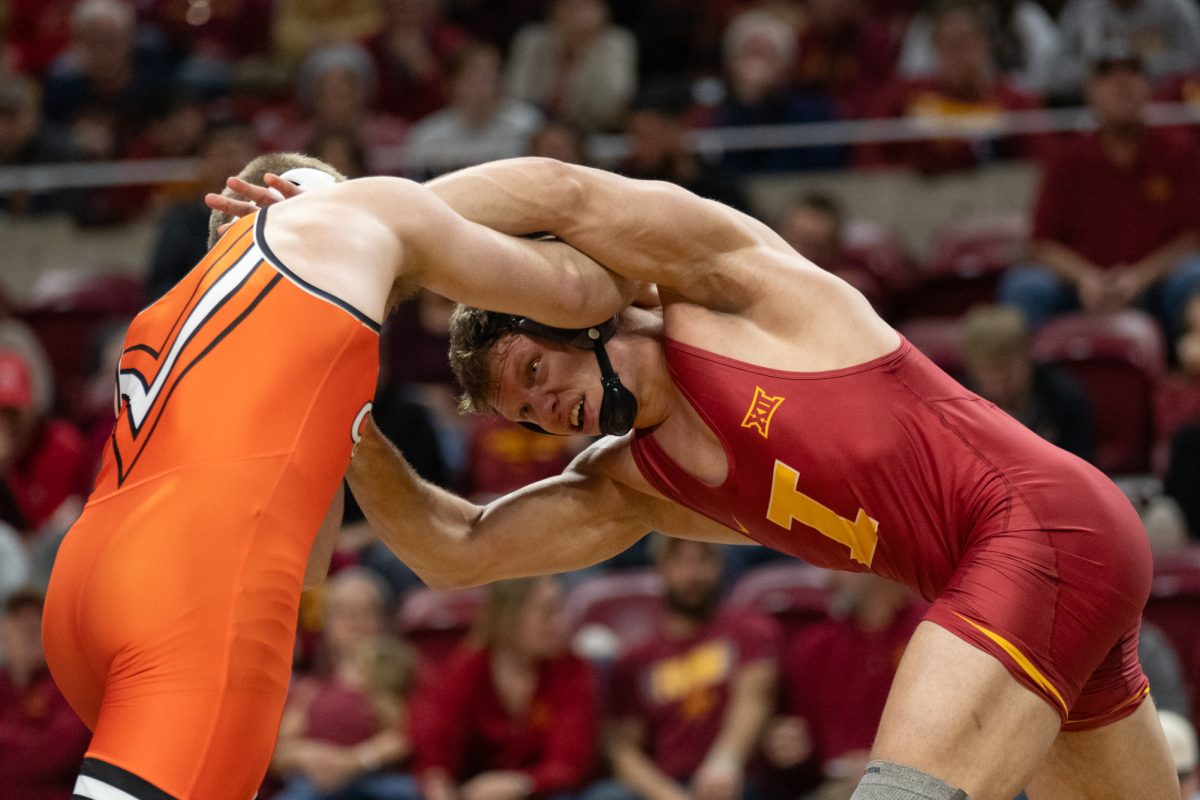BWBR Prize Competition offers internship opportunities, cash prize
By Sheikh Jallow, [email protected]
Two reviewers from the BWBR firm inspect a group’s model.
April 14, 2017
The BWBR prize competition challenged junior architects at Iowa State University and offered students the chance at internship opportunities and a cash prize Friday afternoon.
The competition is an annual challenge funded by the BWBR Architects firm that is committed to draw out exceptional junior architecture students from Iowa State University, North Dakota State University and the University of Wisconsin.
The group that wins the competition is offered a cash prize of $2,000 and internship opportunities.
The competition challenges students to draw out environmental issues in their assigned regions in the United States and create an architectural model that can withstand the harsh surrounding.
This year’s competition at Iowa State’s King Pavilion was coordinated by Calvin Lewis, professor of architecture. Out of the 10 groups, five will be chosen to compete with North Dakota State University and the University of Wisconsin.
In order to study their assigned regions, the junior architecture students traveled to New York, Texas and California.
“Our trip to San Francisco was at the beginning of February,” Evan Harrison, junior in architecture, said. “We went to research the fog condition that are a daily occurrence, as well gain site context and experience the wonderful city.”
Harrison and his partner, Jeff Klynsma, traveled to San Francisco as part of their research process to the final model.
They collaborated to create the “Fog Funnel,” which attempts to solve two environmental issues, water shortage and coastal retreat in the San Francisco Knob Hill neighborhood.
“A lot of the challenge in any design is making things work together in a holistic sense,” Harrison said. “For our project in specific, we had a difficult time creating a form that fit on the site and with the right context. This was especially hard for us as we had to also consider how this would affect our fog-harvesting mesh on the façade.”
The “Fog Funnel” is a dual-story apartment that incorporates mesh-like copper wires as treatment to the foggy neighborhood.
The mesh wires trap the fog and transforms it into water used to take care of potted plants stored in the building. Harrison and Klynsma installed a nutrition bar in the complex to serve as a commercial space for fruits and vegetables from the plants.
Like his peers, Harrison views the challenge as a learning experience, preparing him for his career.
“BWBR offers a cash prize reward,” Harrison said. “Ultimately, however, the professional feedback that we get from the firm reviewers is the best part of the competition.”







